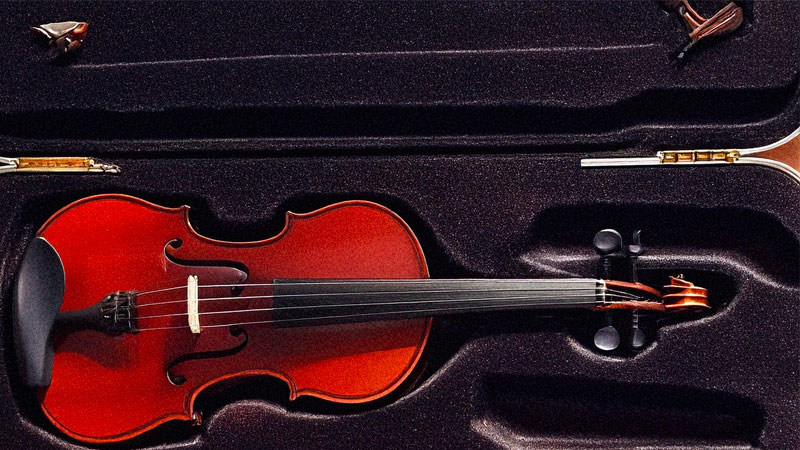A good performance starts before the first note. It starts when your instrument sits in a case, waiting to travel. Scratches, cracks, and temperature swings can wreck tone and playability fast. A strong case lowers that risk, and gives you one less thing to worry about.
Players care about tone, feel, and reliability. Those depend on safe storage and stress free transport.
Retailers like Great Violin Cases focus on that daily, talking with players who need real protection. Their feedback points to clear buying signals that any touring or gigging musician can use.
Shell Strength and Real-World Durability
Case shells do the heavy lifting during trips, rehearsals, and venue changeovers. You want materials that spread and absorb impact without breaking.
Fiberglass and carbon fiber are widely used for that balance of stiffness and weight. ABS plastic can work for lighter duty use, though it scuffs easier.
Check for a continuous shell design that resists torsion when tossed into trunks and gear bins. A snug lid fit helps stop rattle and flex during bumps.
Surface finish matters for wear, since textured shells hide marks better than glossy paint. Corners see the most abuse in transit, so look for reinforced edges that avoid splitting.
Hardware placement also affects strength in daily use. Hinges should be wide and backed by internal plates.
Latches should sit where impact is rare, not right on load points. If a case creaks when you press on it, that is a sign of weak bonding.
Interior Fit, Suspension, and Finish
Inside the case, proper support spreads stress across safe contact points. A shaped interior should hold the instrument by the areas built to carry load.
For bowed strings, that usually means the neck, end button, and bouts. The belly and bridge need space, not pressure.
A suspended design is helpful on rough roads. It keeps the instrument off the shell and blocks shock transfer. Plush linings reduce micro scratches that show up after long travel.
Dense foams resist compression and sag better than soft foams that flatten with time.
Bow holders need consistent grip that will not snag hair or scratch stick finish. Small storage pockets are useful, though they should not press on the instrument when closed.
Test the close with rosin, cloth, and tuner inside, then shake lightly. Nothing should shift or rub.
Temperature and Humidity Control
Wood moves with climate, and instruments are very sensitive to swings. A case with insulation slows change when you step between cold venues and warm stages.
Look for tight gaskets and a lid seal that actually compresses, since gaps can leak air fast.
Humidity control should sit near the body cavity and away from bows or bare finish. Many players use two stage setups, with a small humidifier plus a passive pack.
A simple dial hygrometer helps you see trends across seasons. Aim for stable conditions so wood joints and glue lines stay happy.
If you want reference guidance on safe ranges for stored objects, museum preservation resources discuss relative humidity effects on organic materials.
Hardware, Latches, and Everyday Usability
Hardware breaks faster than shells in many cases, so inspect it closely. Latches should close with a firm click and no side play.
Spring loaded models add security because they resist accidental openings when gear shifts. Metal loops for straps should be riveted through to backing plates, not glued to thin shell panels.
Comfort matters when you carry the case for blocks between parking and stage doors. Padded backpack straps spread load better than thin webbing.
A molded handle reduces hand fatigue during quick sprints between connections. Weight is a factor, but balance is just as important. A well balanced case feels lighter than a heavier, nose heavy one.
Security is part of usability, especially in shared spaces and green rooms. TSA friendly locks help during airport checks.
For local gigs, a simple lock that discourages casual access may be enough. Pick what fits your routine, not a feature list that never gets used.
Storage, Organization, and Smart Packing
Players carry more than an instrument. Bows, rosin, shoulder rests, strings, and cleaning cloths need tidy homes.
Interior compartments should close tightly, so contents cannot escape and scratch varnish. Removable accessory pouches are helpful when you need quick swaps on stage.
Keep weight distribution in mind as you pack. Heavy items near the hinge side lower torque on latches.
A spare string set weighs little and prevents missed sets due to breakage. A soft cloth barrier inside the lid helps stop rosin dust from settling on varnish.
Label compartments if you share cases within a section. Color coded pouches help techs and section leaders find things in the dark.
A small checklist card inside the pocket reduces forgotten tools, especially during festival runs with fast stage changes.
Travel Rules and Airline Realities
Air travel adds another layer of stress, so learn the rules before you book. U.S. regulations allow small musical instruments to be carried on if space is available.
That policy applies when the item fits in the overhead or under the seat during boarding. It helps to board early and choose seats close to open bins.
Measure the case carefully, including protruding latches and feet. Gate agents judge by fit and visual size, not a spec sheet. A printed copy of the policy often helps during busy boarding.
Road travel brings different risks. Trunks heat up quickly under sun, and winter cold can be harsh on glue joints. Let the case acclimate before opening in extreme weather.
A quick touch test on the shell tells you whether to wait a few minutes before tuning.
How Retail Expertise Helps You Choose Well
Shoppers face a wide range of options and mixed marketing terms. Retailers who focus on instrument protection deal with returns, repairs, and real tour stories every day.
That experience helps separate useful features from features that only sound impressive on paper.
Teams that sell, ship, and support cases gain practical insight fast. They hear about latch failures, strap issues, and humidity problems from customers.
They can suggest designs that match routes, climate, and playing schedules. Shops like Great Violin Cases also see long term wear patterns across brands and models, which informs their recommendations.
When you speak with a specialist, share your routine in concrete terms. Mention travel type, climate swings, and storage locations.
Ask where cases fail and how to spot weak points during inspection. That talk often saves money and time by avoiding mismatched picks.
Bringing It All Together for Safer Storage and Transport
Strong shells, proper suspension, and climate control work together to protect tone and feel. Good hardware, balanced carry, and smart packing make daily use easier and safer.
Clear knowledge of travel rules reduces stress during tight connections and crowded gates. A short talk with a focused retailer can match features to your actual routine.
With those points in mind, your instrument can arrive ready to play, every single time.





